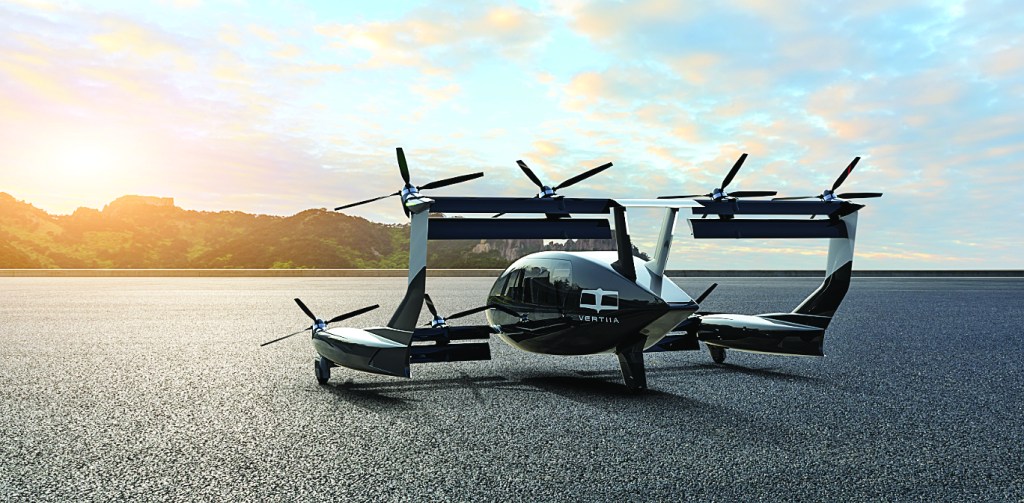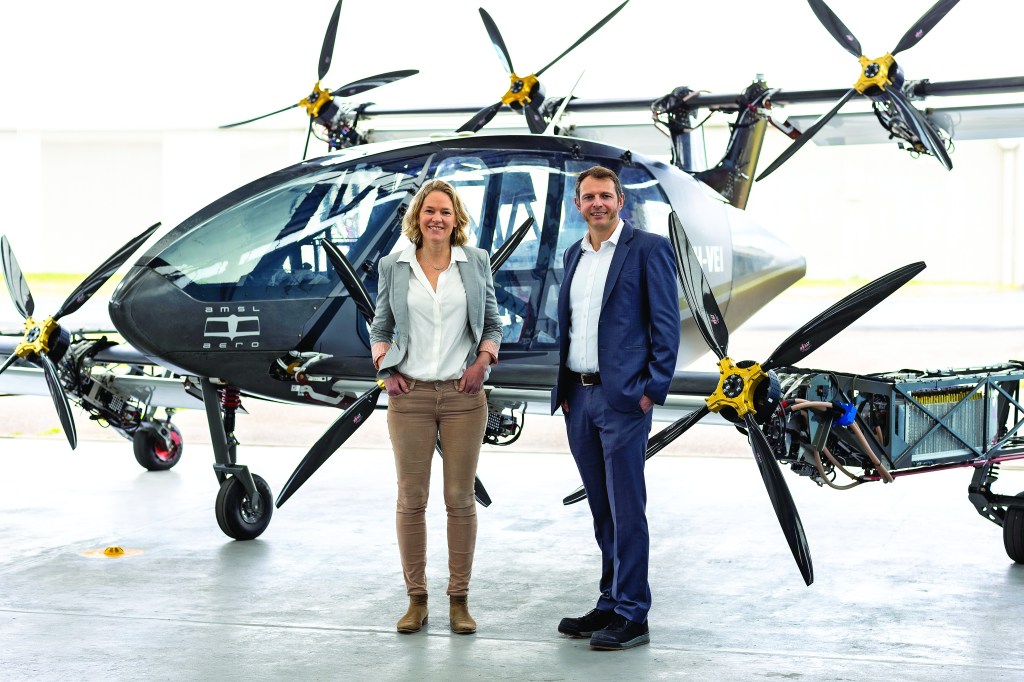From having a dream to build a flying car, a kid from the bush has developed a unique aircraft using 19th-century inspiration and 21st-century green tech that might revolutionise regional Australian aviation, air rescue and natural disaster response.

Out the back paddock when he was about seven years old, Andrew Moore says he had an idea.
It is not unusual for kids to have quixotic dreams gazing at the big-sky country around Uralla on NSW’s New England tablelands – the landscape is, after all, conducive to them.
It occurred to the young Moore that flying was probably a much better way to get around than driving – logical given the distances folk regularly travel out there – and wouldn’t it be good if everyone had a plane?
Moore was living on what, by Australian standards, was a small farm. His dad had been a navy pilot, engaged in high-risk flying from the aircraft carrier HMAS Melbourne – and they had what was essentially a grass airstrip for small aircraft. It made sense to Moore that everyone should fly.
The dreams of youth were rudely interrupted when he realised that not everyone “had 300 acres up their sleeve” to build an airstrip.
It was a bit of a journey to get there, but the now co-founder and chief engineering officer of AMSL Aero is on the cusp of launching Vertiia into Australian skies.
It’s a VTOL – a vertical takeoff and landing aircraft. But unlike a conventional helicopter, it’s emission-free (runs on hydrogen – more about why later) and has a range of about 1000km at a speed of 300km/h.
It’s also considerably cheaper to run and maintain.
Leaving childhood fantasies behind (well, not entirely), Moore decided there might be a better use for the exotic aircraft he and his team were developing than providing flying taxis for the rich.
Informed by his work in the navy as an engineer serving in peacekeeping roles in the Solomons, his time working for a small company designing and modifying aircraft to be air ambulances, and also a stint at Yamaha working on the electrification of helicopters – his mind was steering toward more practical and mission-critical applications.
He says the genesis moment that started the company was a chance meeting where a potential customer wanted to be able to evacuate a wounded soldier.
He formed the company in 2017 with co-founder Siobhan Lyndon and now says he has real orders from real customers with real money on the table and hopes to see the futuristic-looking craft in the air by 2027/28.

According to Lyndon, their first customer intends to use the aircraft in regional air transport operations for charter and remote area access.
“They’ve placed deposits for the first 10 aircraft with an option for another 10, and we’re in talks with quite a few others,” Lyndon says.
“Alongside that, we also have our longstanding partner, the Australian Army through the Department of Defence, who we’ve had a number of contracts with.”
The defence development contracts are worth around $10 million. Moore is confident his company “will be in as good a position as any” to deliver final aircraft as long as they perform and hit targets.
There are about 300 VTOL, low or zero-emission aircraft in production or development around the world, but, to borrow a cliché, there’s a lot of sizzle and not much sausage. Its architects claim this project has hard cash orders and is uniquely designed for Australian conditions.
Its VTOL capabilities, long-range (based at Bankstown in Sydney, it would have pretty much NSW covered), and speed could revolutionise air ambulance and remote rescue services, as its developers claim.
Its design is inspired by the 19th-century box-kite, a heavier-than-air flying machine (it achieved the soaring altitude of 16 feet – 5m when it did fly) invented by Australian Lawrence Hargrave in the 1890s.
The genius is in the simplicity, according to Moore.
“It’s a modern derivative of the Hargrave box kite,” he says.
“The same things which made [it] work for Hargrave can be utilised – you can have really high efficiency with a relatively short wingspan.
“You have a wing at the front and a wing at the back, and they’re separated vertically and the structure that connects them allows you to reduce the effect of the wing tip vortices.”
In practice, you can make the machine lighter and more stable, making it much faster and use less fuel – and increase the relative payload.
The knock-on effects also include making the engines smaller because you need less thrust.
“When we started, we were looking at [electric], and for our prototype, we used batteries because they are good for that testing stage,” Moore says.
Moore turned to hydrogen when he realised he could get four times the range and about a 6th of the refuelling time, with the bonus of much less infrastructure.
“Because of the longer range they actually need less infrastructure because you can have fewer refueling stations,” he says.
At the risk of saving the best until last, the aircraft can also be operated remotely, possibly autonomously. So, I discussed with Moore and Lyndon the possibility of fleets of these (relatively) cheap aircraft flying by remote control, fighting bushfires in conditions too dangerous for human pilots. Watch this space.


